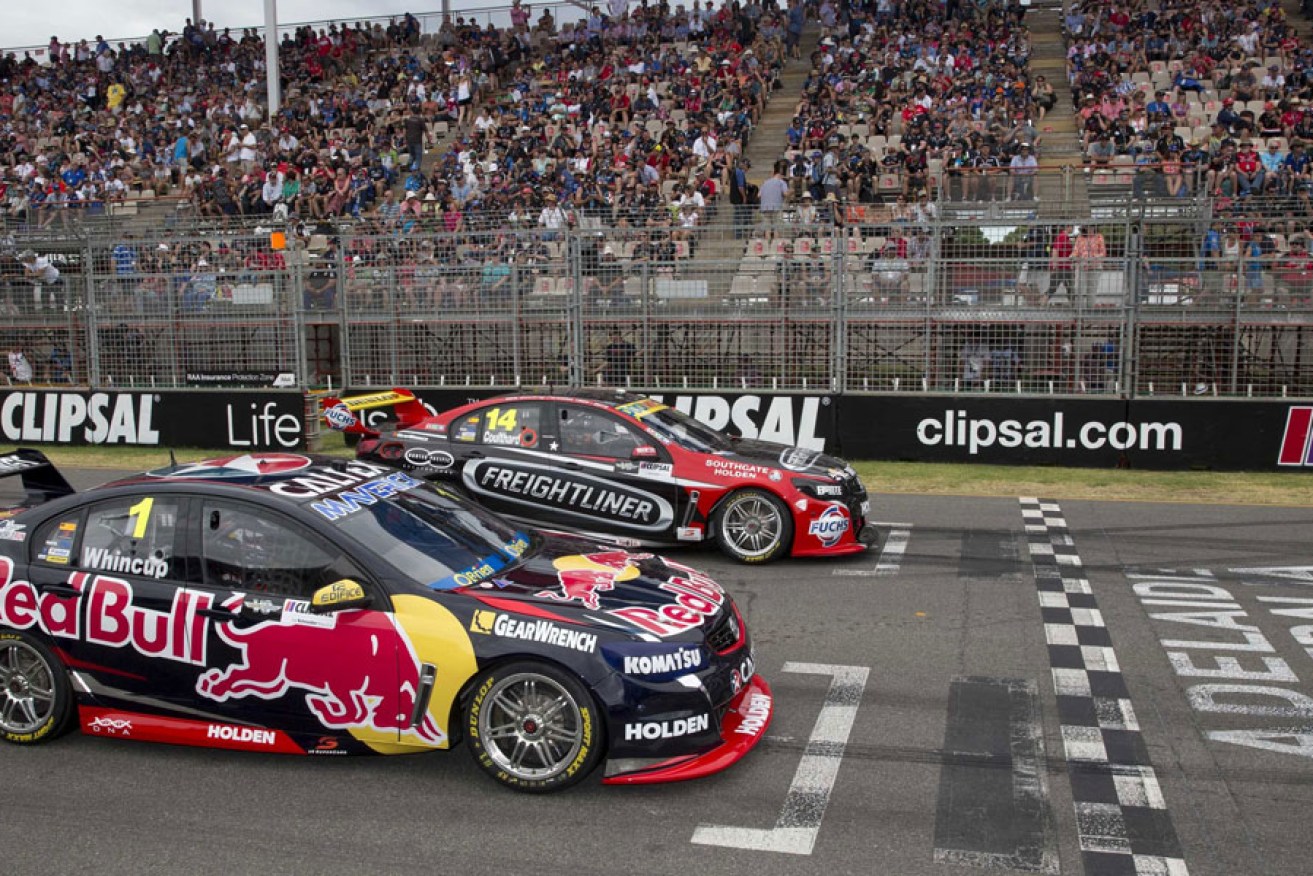Clipsal sets “record”… so why weren’t our hotels full?

Crowds at the finish line of this year's Clipsal 500.
Tourism Minister Leon Bignell wore his trademark broad grin as he stood up in parliament yesterday to reveal this year’s Clipsal 500 generated “a record $60.6 million for the South Australian economy and created 440 full-time equivalent jobs”.
So why were some of the state’s biggest hotels losing money?
Figures crunched by hotel data market company STR Global and obtained by InDaily show a worrying four-year decline in occupancy over the four-day motorsport event, and its traditional weekend “full house” nights in particular.
In 2012, the key hotel trading night of Saturday was oversubscribed, with not a spare hotel room to be found in Adelaide.
This year, though, the occupancy rate was only 93.8 per cent.
It’s a similar tale on the Thursday (from 96.2 to 93.2) and the Friday (from 98.9 down to 91.6).
| Thursday | Friday | Saturday | Sunday | |
|---|---|---|---|---|
| 2015 | 93.2 | 91.6 | 93.8 | 88.7 |
| 2014 | 94.9 | 94.3 | 97.8 | 89 |
| 2013 | 92.9 | 95.5 | 97.7 | 88.1 |
| 2012 | 96.2 | 98.9 | 100.8 | 87.1 |
This year saw 285,000 V8 fans attend over the course of the event – a 4.3 per cent increase on 2014.
“This was the third largest overall crowd attendance in the event’s 17-year history and the second highest Sunday attendance ever of 93,600,” Bignell said, with the lure of a reunited Cold Chisel shaded only by the double-bill of KISS and Motley Crue in 2013.
“More than 12,900 people travelled from interstate and overseas with Adelaide’s hotels and motels recording 67,597 visitor bed nights,” he said.
“The Clipsal 500 has always been the event that sells out nearly every hotel room in Adelaide.”
But not any more. Major hoteliers have privately reported flat trading over the event, and over much of Mad March.
The primary reason, not surprisingly, comes down to an influx of new players in the market, with the Ibis, Quest and Mayfair developments among those opening in recent months.
The concern, though, is that the underlying assumption underpinning the recent hotel mini-boom (with a luxury Sofitel on Currie St set to join the throng) is, to borrow from Kevin Costner’s Field Of Dreams, if you build them, they will come.
But two years of diminished occupancy rates during what has traditionally been the industry’s “no vacancy” weekend suggests otherwise.
“The raw stats tell us there were more people staying in hotels in February and March, but also a lot more rooms available,” said Australian Hotel Association SA CEO Ian Horne.
“The conventional wisdom has always been ‘build them and they will come’, and that’s okay for a movie, but that’s not how it works in the real world.”
The vacancy rates reflect the increase in supply: this year there were 8101 rooms available across 103 properties. Last year it was only 7385 rooms across 99 properties and in 2013 there were 6890 rooms for hire in 84 hotels.
“If the 600 plus (extra) rooms weren’t there we would have been full house … so demand has grown, but supply has outgrown even more than that,” Horne explained.
“And that affects the capacity to charge (a premium) room rate.”
He has anecdotally also heard that the “harsher economic outlook across Australia” has deterred some of the bigger companies from pre-booking large package events, although “statistically they’ve been replaced by other people”.
For Horne, the concern has been finding a way to build demand to match the burgeoning oversupply, or as he puts it: “There’s the risk we’ve got the supply side down, but not the bums in beds, for want of a better word.”
And he’s hoping the Government’s pre-budget announcement on Sunday that it will spend $35 million over two years to promote the state nationally and internationally will bring the bums to the beds.
“The day has largely been saved by (that) commitment,” he said.
“Had they not committed that there would have been real anxiety (about) ‘Gee, we’ve got this infrastructure but how do we get the people here?’”
The Opposition points out that Labor’s new tourism funding commitment essentially replaces five years of cuts to the sector’s budget since 2009, putting it only marginally higher than it was in 2009-10 in dollar terms, and significantly lower in real terms.
But Horne says correctly targeting that money will be the key to continuing the influx of new market entrants.
“That’s what’s going to get the next generation of hotels built, the Sofitels and all that,” he said.
“They’ll only start laying bricks and mortar if (demand) figures start increasing.”
“(And) we’ll have the same – for want of a better word – hiccup whenever a new hotel opens up in the market.”




